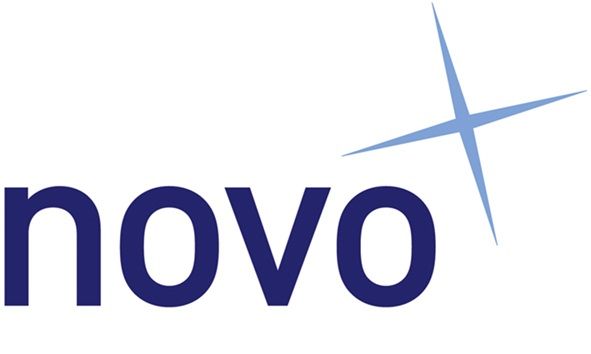The Rise of Job Hugging in the UK

A new term is quietly shaping today’s workforce: “job hugging.” It may sound light-hearted, but the reality behind it reflects deeper issues in the UK talent market.
Where once we saw job hopping, the great resignation, and quiet quitting, today’s trend leans in the opposite direction. Job hugging describes employees who hold tightly to their current roles, even when those roles are no longer the right fit.
But what exactly is driving this behaviour now, and what are the implications for employers?
What Job Hugging Looks Like in Practice
You’ll hear it in conversations with candidates. Before asking about salary or benefits, many now lead with: “How secure is this role?”
Others hesitate to apply at all, reluctant to commit time and energy to a hiring process they fear may not result in an offer. Some quietly shelve long-term ambitions, choosing security over opportunity.
From an employer’s perspective, the effects are increasingly visible:
- Vacancies are harder to fill
- Candidates are more risk-averse
- Existing staff are staying put, but not necessarily thriving
It creates an illusion of stability, but one that may mask disengagement and lost momentum.
What’s Driving Job Hugging?
A key factor is the shrinking pool of opportunities.
According to McKinsey UK, the UK employment market is cooling significantly. Job vacancies have fallen by 43% from 1.3 million to 0.7 million, between 2022 and 2025. Roles most impacted by AI, such as those in research, data, media, and design, have seen the steepest declines in postings.
The slowdown has been compounded by economic and policy factors, particularly the October 2024 Budget and subsequent National Insurance reforms, which have had a ripple effect across hiring confidence. The Employment Hero Annual Jobs Report notes a sharp drop in employment activity following the budget, with a -0.9% dip in December 2024. While a recovery began in early 2025, year-on-year growth slowed to 3.1% by July, down from around 8% in 2024.
Sentiment has followed suit:
- 55% of workers now prioritise job security over career ambition
- This rises to 65% among 18–34-year-olds
- 59% believe the UK labour market is getting worse
- 51% are not confident they could secure a new role within three months
- And 40% feel competition is too intense – 53% among younger workers
In this environment, many see their current role as the safest option. The cost (in time, effort, and risk) of pursuing something new often feels too high.
Yet, for some, staying is not about fear. It offers tangible benefits:
- Greater stability
- Time to deepen expertise
- Stronger long-term relationships
- A chance to deliver on meaningful goals
For these employees, it’s a calculated investment.
Why It Matters
At first glance, job hugging can appear beneficial: lower turnover, reduced recruitment costs, and a stable workforce.
But beneath the surface, risks emerge:
- Employees may be unfulfilled, present but unmotivated
- Innovation and agility may stagnate
- Early-career talent struggles to break in
- The redistribution of skills slows dramatically
In short, a culture centred on staying still won’t drive long-term performance.
Kevin Fitzgerald, UK Managing Director at Employment Hero, puts it clearly:
“With most people holding a negative view of the jobs market, it’s no surprise we’re seeing more ‘job hugging’ as employees look to weather the storm. But this isn’t a long-term solution. Job mobility is key for growth-both for people and businesses.”
How Employers Can Respond
- Check In, and Listen
Create structured opportunities for open, honest conversations. Then follow through. Show employees their feedback matters by taking visible action. These moments give leaders insight into employee concerns and motivations.
- Invest in Growth, Not Just Retention
Offer meaningful development. Whether employees stay long term or not. Providing access to training, mentoring, or career progression demonstrates commitment and helps people feel valued, not stuck.
- Lead with Empathy
In uncertain times, empathy builds trust. Leaders who speak openly about challenges and invite employees to do the same, foster stronger, more resilient teams. Whether through Q&A sessions, casual coffee chats, or team check-ins, model vulnerability as a strength.
- Make the Vision Clear
Help people connect their day-to-day work with something bigger. Explain the company’s direction, how their role contributes to it, and the key milestones ahead. When people understand the “why,” they’re more likely to stay with purpose, not fear.
Is Job Hugging Just a Phase?
Likely, yes. Confidence will return and when it does, those who’ve been holding back may all move at once.
If your only retention strategy has been employees’ reluctance to leave, you may face a sudden wave of resignations. As Fitzgerald notes, “we’re now at a critical juncture” and smart organisations are using this quieter period to build deeper loyalty.
The companies that invest now in culture, development, and clear communication will retain talent when the market recovers. Those that don’t may find themselves scrambling to rebuild.
Final Thoughts
Job hugging doesn’t mean people have lost their ambition. It means they’re being cautious. In a world full of volatility, employees are seeking one thing above all: stability.
For boards and leadership teams, the challenge isn’t just keeping people in their seats, it’s keeping them motivated, engaged, and energised while they’re there.
Because when staying feels like a deliberate, empowered choice, not a reluctant one, retention becomes a competitive advantage.












